Arribada – Mass Congregation and Nesting of Olive Ridley Sea Turtles. Arribada is a Spanish word meaning “arrival by sea” and my god, what an arrival it is. It is a sight to behold. Thousands and thousands of turtles congregate on the beach and lay about 40-60 eggs each. The mass nesting by female Olive Ridley turtles takes place in February-March every year. Gahirmatha in Orissa is believed to be the largest nesting ground in the world of these sea turtles. The beaches on the Rushikulya river mouth in Orissa are believed to be the second largest nesting ground in the world. Hundreds of thousands of turtles lay their eggs during the nesting period.
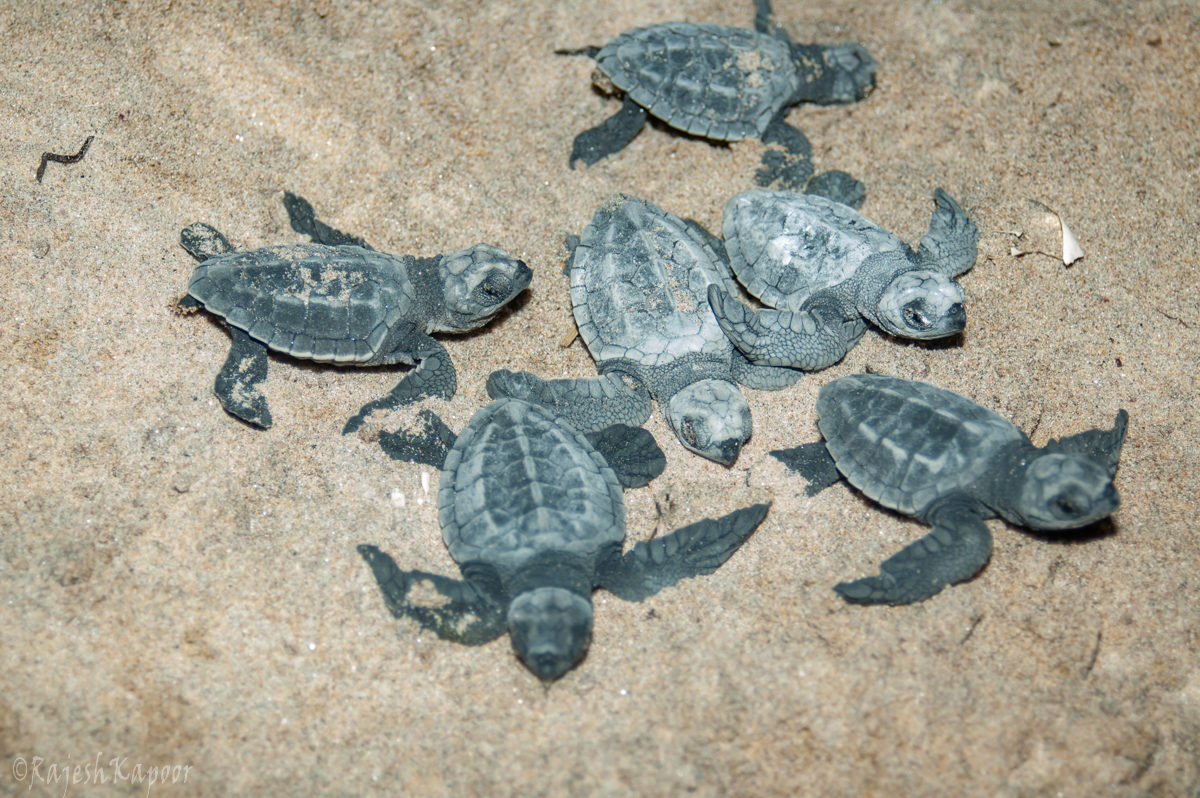
According to Wikipedia –
“Olive ridley turtles are best known for their behavior of synchronized nesting in mass numbers, termed arribadas. In the India Ocean, the majority of olive ridleys nest in two or three large aggregations near Gahirmatha in the Orissa. In 1991, over 600, 000 turtles nested along the coast of Orissa in one week. Nesting occurs elsewhere along the Coromandel Coast and Sri Lanka, but in scattered locations. However, olive ridleys are considered a rarity in most areas of the Indian Ocean. They are also rare in the western and central Pacific with known arribadas occurring only within the tropical eastern Pacific, in Central America and Mexico.”
When an opportunity came my way to witness the mass-congregation and nesting of Olive Ridley sea turtles, I simply could not resist. I packed my cameras and started off late in the evening for the nesting site near Rushikulya river mouth which was about four hours’ drive away. By that time, we had already received the message that the turtles had started arriving in large numbers. After a quick dinner break on the way, we started for the nesting site. My colleagues had already made arrangements (requisite permissions etc.) to go to the beach, which becomes a restricted and out-of bound area during the nesting season. While, probably, millions of eggs are laid by turtles during the short nesting period, a large number of eggs are devoured by predators like, dogs, foxes as well as large birds. Even villagers from nearby villages take out the eggs from the nests and feast on them. The forest department and some NGO groups, therefore, make special arrangements to ensure the protection of the turtles against predators as also against tourists disturbing them during this period. While it is impossible to fence of the entire stretch of the beach over several kilometres, a small portion is fenced off to protect the nests from destruction. Entry to this area is allowed only to authorised personnel through manned gates. These protective measures are indeed very essential as reportedly the population of these turtles is declining very fast. Wikipedia states –
“The olive ridley sea turtles are considered the most abundant, yet globally they have declined by more than 30% from historic levels. These turtles are considered endangered because of their few remaining nesting sites in the world.”
Having heard about the mass nesting and seen some documentary films on TV channels earlier, anticipation was very high. But what confronted me on reaching the site of mass nesting was unbelievable. I was simply not prepared for the scene in front of my eyes. A continuous stream of turtles landing on the beach, with the incoming waves, to lay the eggs and an equally large number of them going back to the sea after having completed their annual maternal ‘dharma’. Photographing them, however, was a challenge as it was pitch dark, and all our sightings were made with the help of small low-light hand-held torches only. Even the torches were sparingly used so as not to disturb the nesting turtles. However, these torches were essential to ensure that we do not step on the turtles in the pitch darkness. It turned out that the best way to record the event was by making a video. My small pocket camera came in very handy for this. I did, of course, take a few still photographs too.
The process of nesting, as witnessed by me and recounted to me by the forest department staff accompanying us, goes like this.
A few days before the D-day, the turtles start arriving in waters near the nesting area, having travelled thousands of kilometres for the annual ritual. Once ready, they all start arriving at the beach in hordes and laboriously walk inwards 20-30 meters, almost to the edge where the wet sand ends and dry sand begins. They stay within wet sand side. This ensures that while it will be easy to dig a nest in the sand and level it after laying the eggs, the nest will also be safe from the high tide water which can destroy the nests and drag away the eggs with the receding water.
mother turtle starts digging a hole in the sand with its hind flippers

On reaching a suitable spot the mother turtle starts digging a hole in the sand with its hind flippers, alternating between the right flipper and the left flipper, with each stroke it throws sand outwards. It is a very painstaking and time-consuming job and can take hours. The deeper the nest, better are the chances of surviving it.
Each egg looks just like a table tennis ball.
Once the nest has been dug up to its satisfaction, it starts dropping eggs from a tube-like organ on the rear of its body. Each egg is about the size of a table tennis ball – in fact it looks just like a table tennis ball. However, it is quite soft and therefore easily absorbs the shock of the fall into the nest and survives. Each mother turtle lays several dozens of eggs. Once done, she starts pulling the sand back into the nest with its hind flippers. It was amazing to observe that once the nest has been filled in with sand it stomps the area with its body several times to level the area, so as to remove the trace of the nest to protect it from predators. The incoming and outgoing traffic at this juncture is very heavy with turtles literally stepping over each other in the darkness. While jostling for nesting space, many of the turtles, inadvertently, end up digging at a spot where another nest already existed and thus expose and destroy the eggs laid earlier.
Mother stomps the nest with its body to level the area to protect it from predators.
The eggs hatch after about 40-45 days. Once I got the intimation that hatching has begun, off I was, once again, to the nesting beach. This time we reached the site slightly before sunset. The scene, though very different, was equally mesmerising. Tiny turtle hatchlings, smaller in length than an adult male finger, were emerging from the sand and then dashing towards the water. Their tiny strides taking them forever to reach the shoreline till an incoming wave first submerged them and then dragged them into the sea – the beginning of their life at sea.
As the darkness fell, the hatchlings became a deluge and one could see hordes of them making a dash towards the water. It was very surprising how a new born hatchling knows the direction in which to go or rather run. Run. As best as can with its tiny flippers, to make it to the water in the shortest possible time, so as to have the best chance of its survival from the predators. As for the direction, maybe they are guided by the sound of the waves. These must be genetically hard coded into them. However, I also noticed that the turtle hatchlings were distracted (or rather attracted) by light as on shining the torch light they would change their direction and start following the light.
It is surprising how a new born knows the direction in which to go
A very touching sight that evening was two very small children (their parents watching at a safe distance), who had obviously come prepared, picking a number of hatchlings and carrying them in their small toy bucket and releasing them near the water. The hatchlings must have whispered their ‘thank yous’, I am sure.
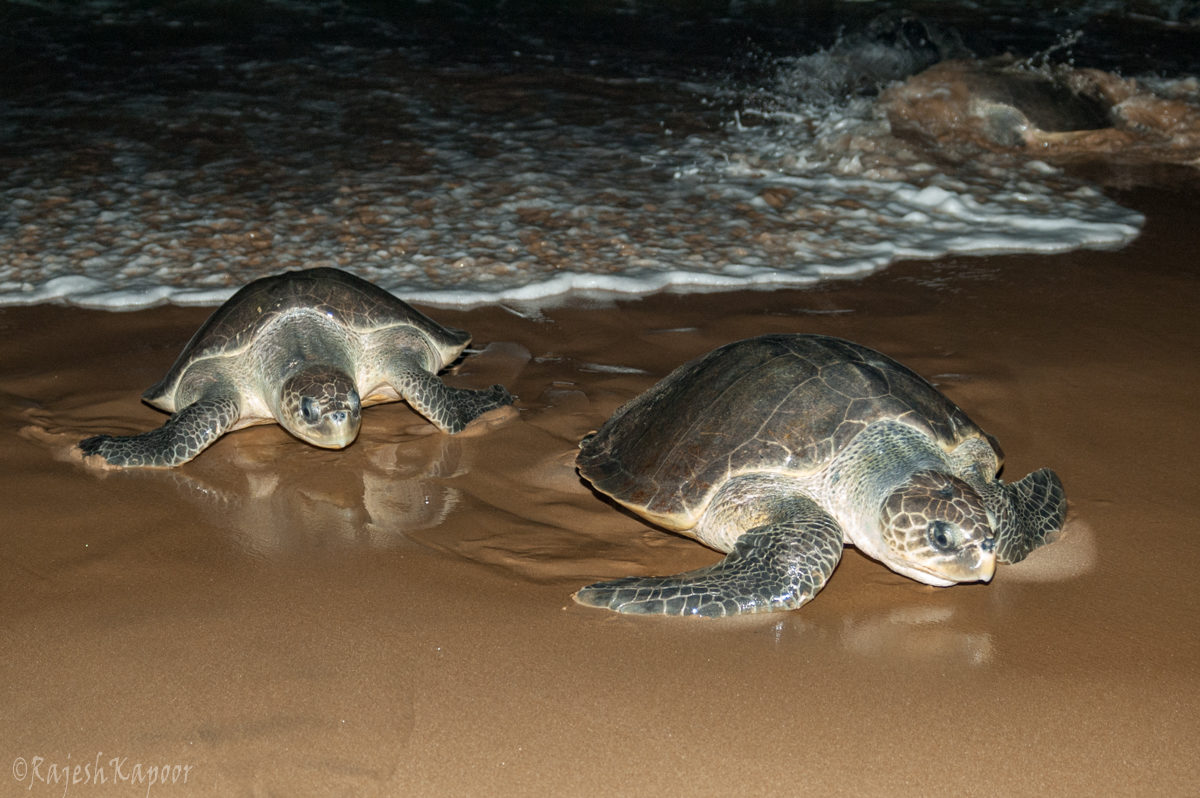
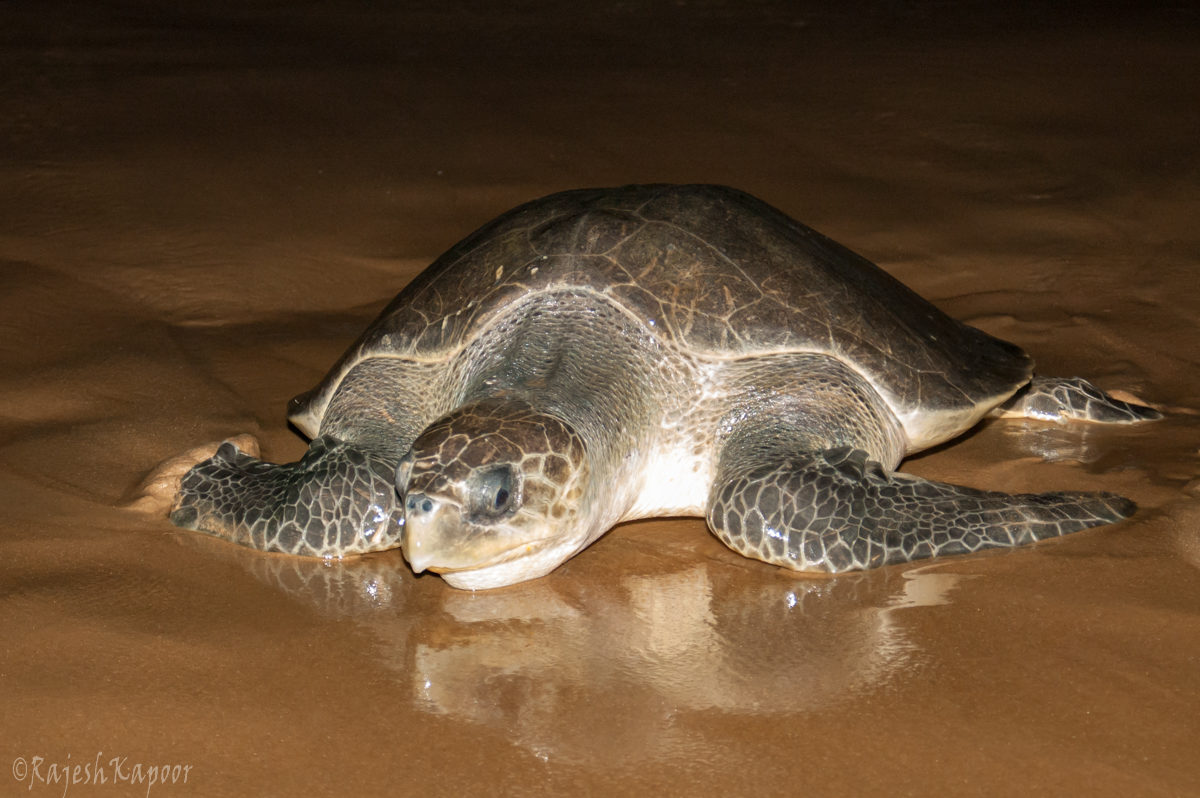
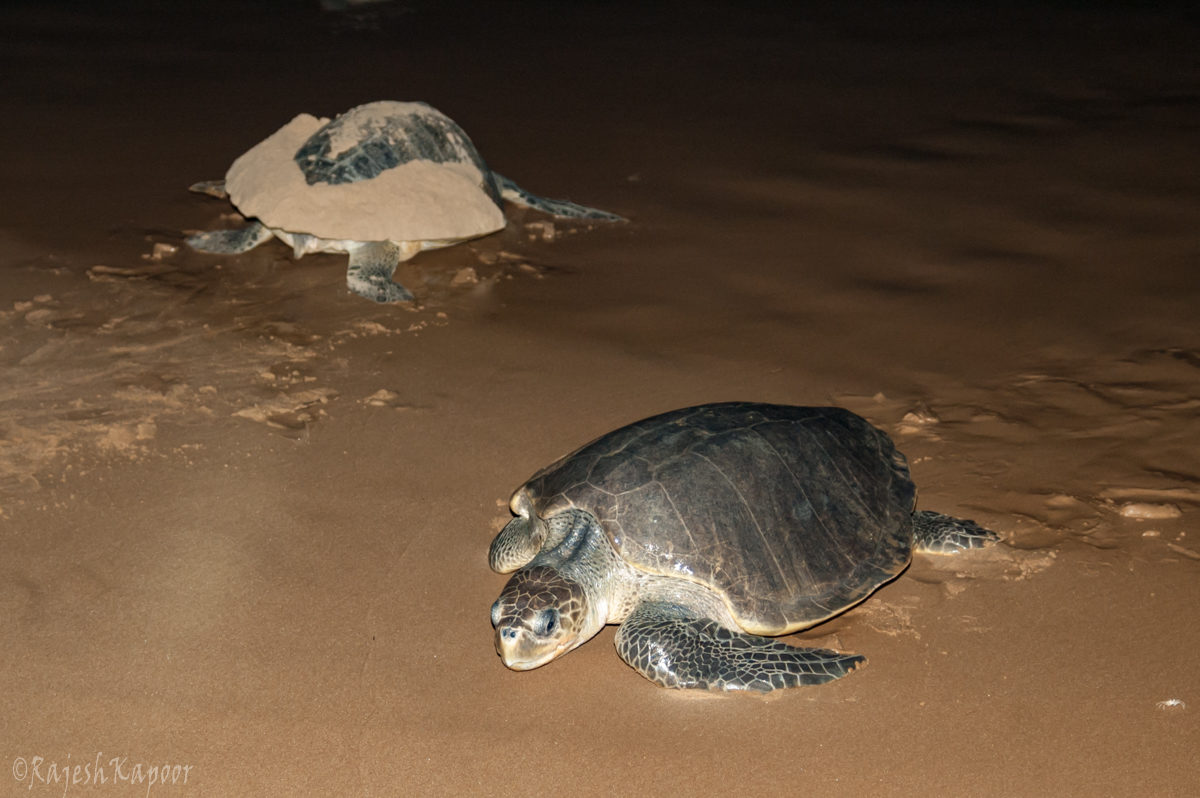
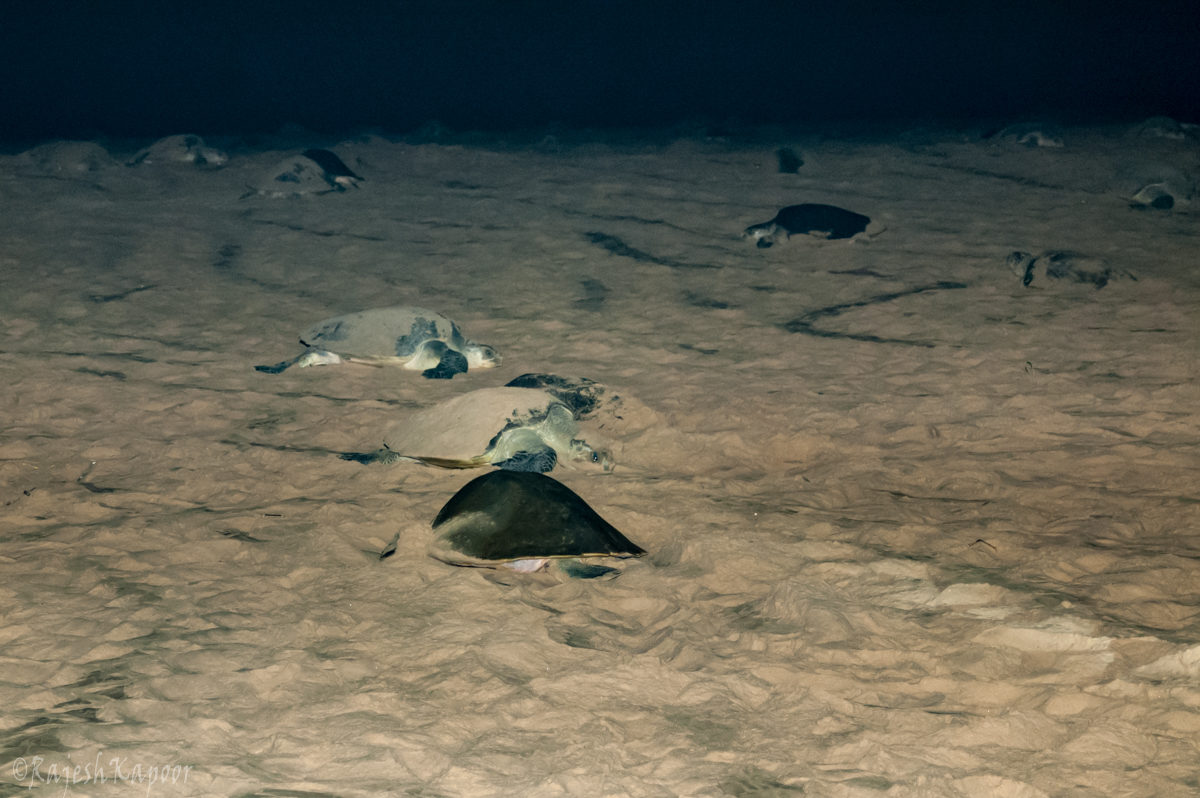
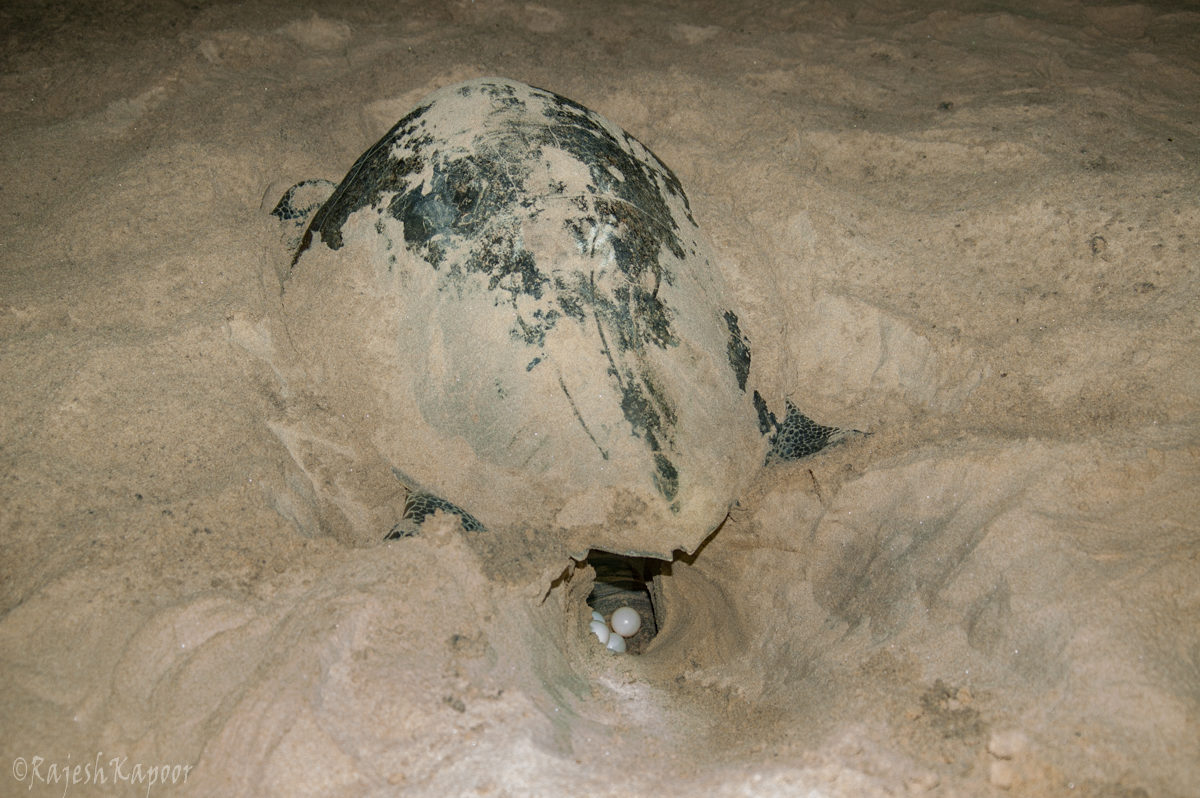
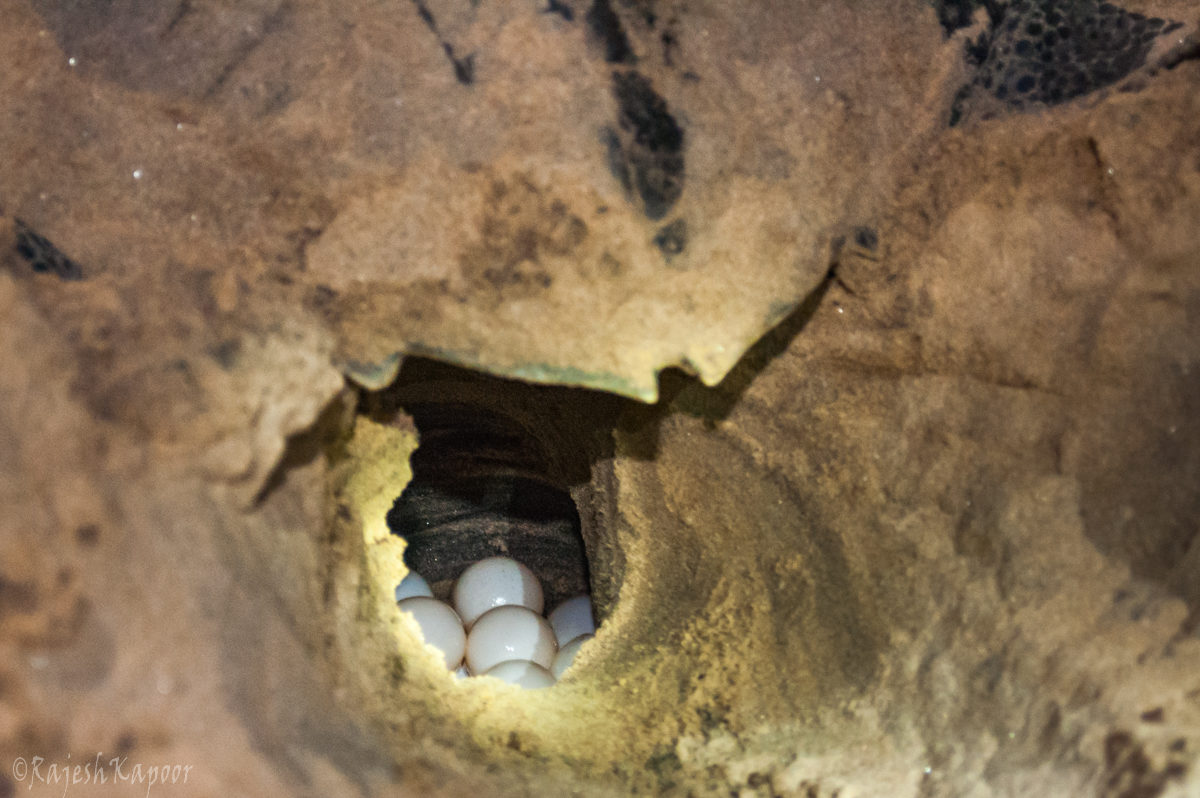
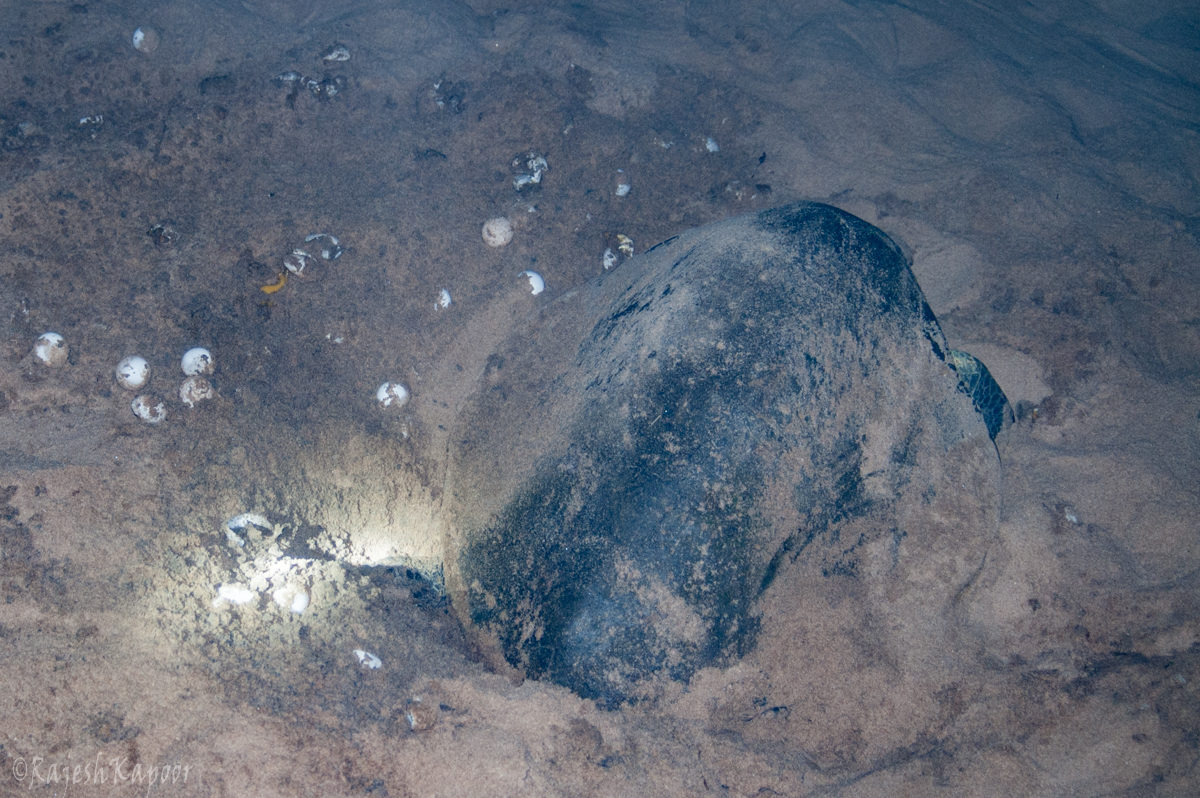
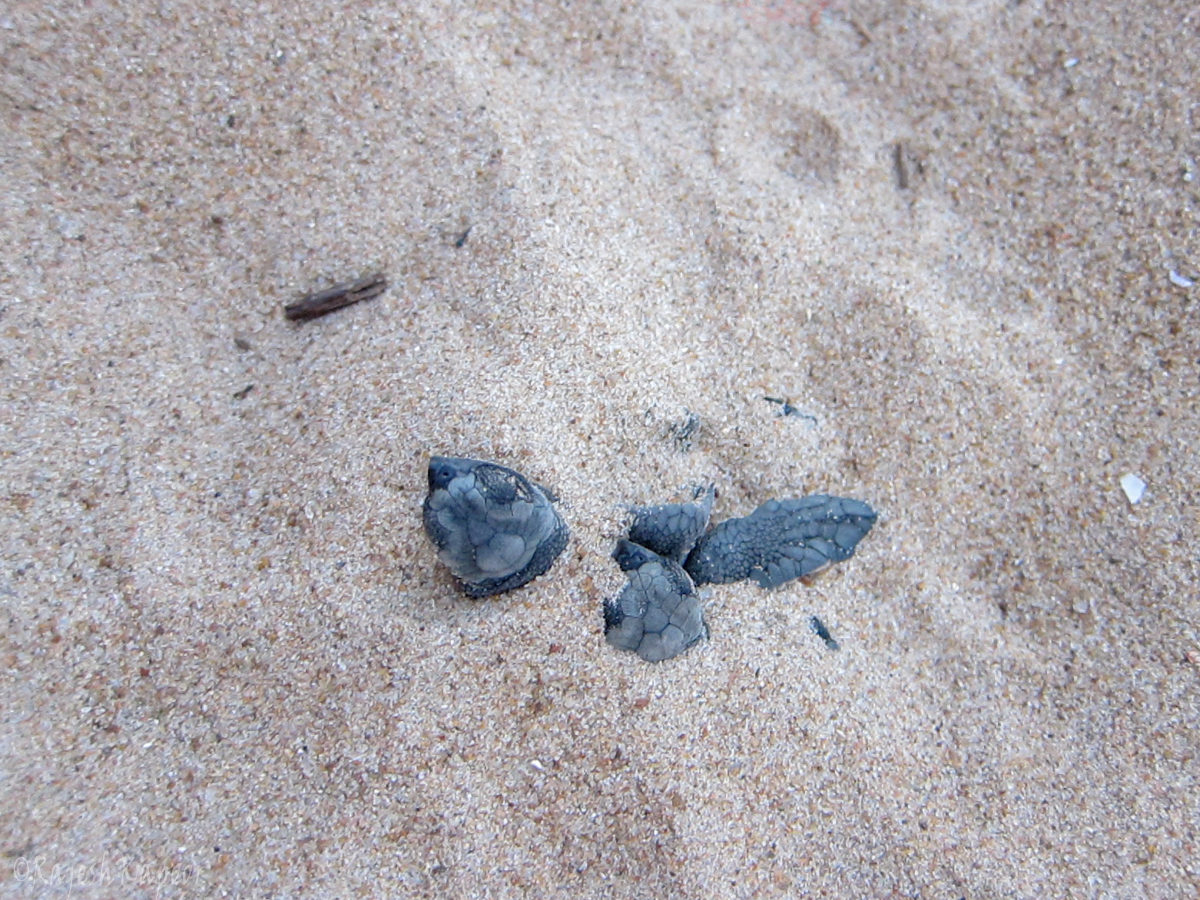
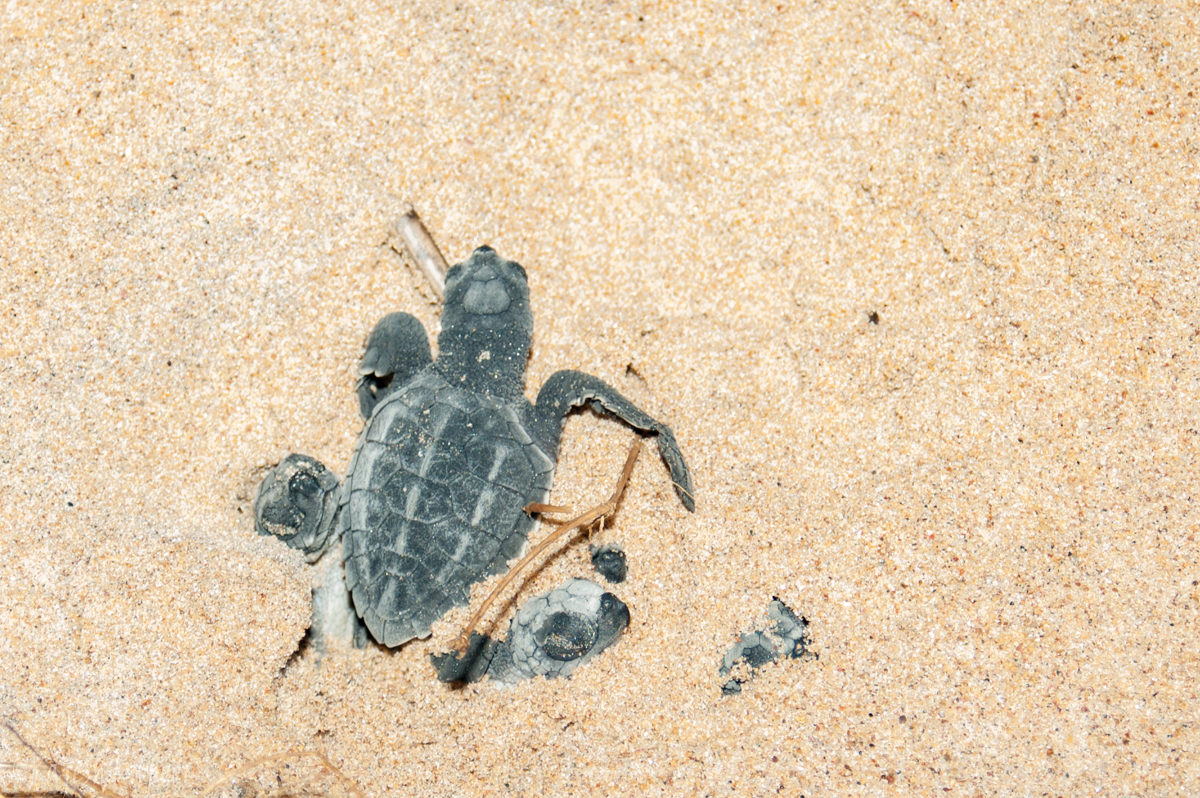
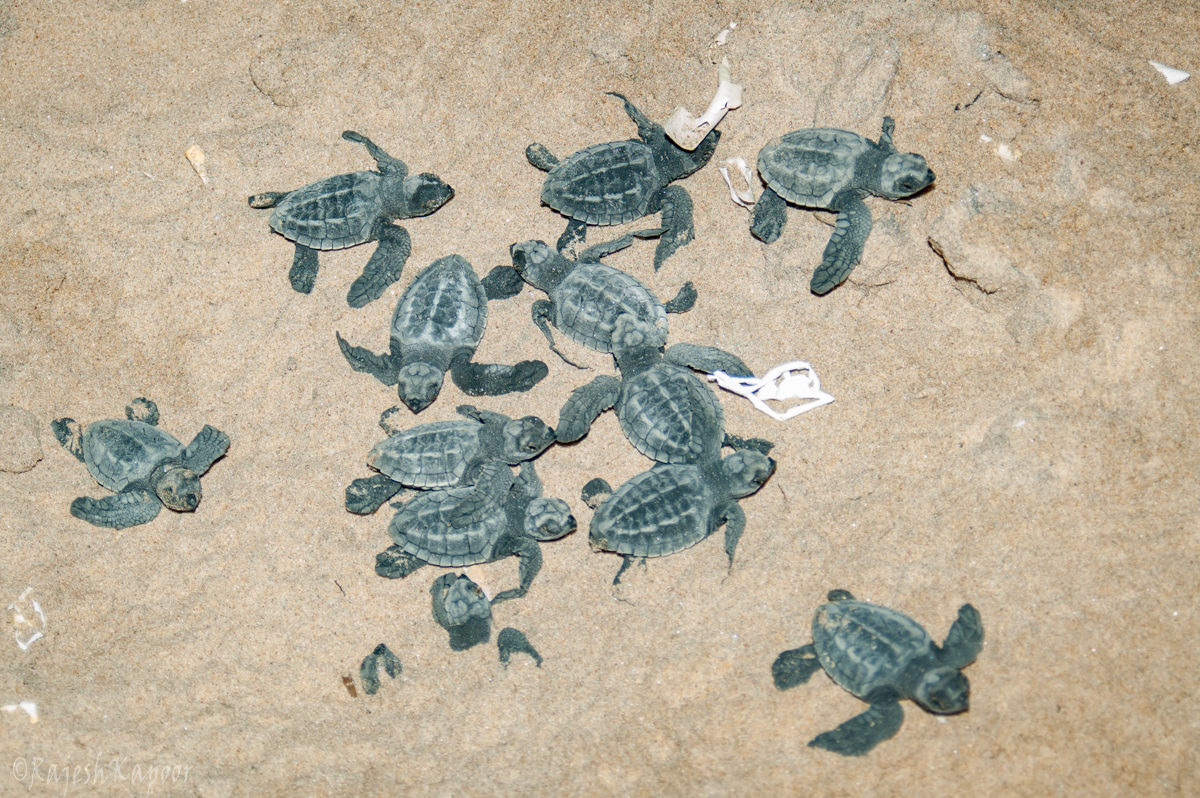
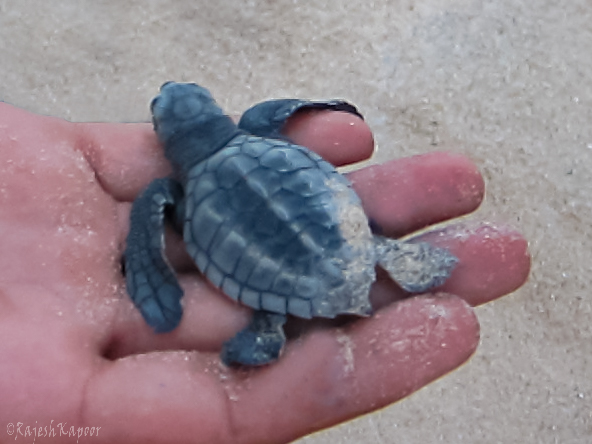
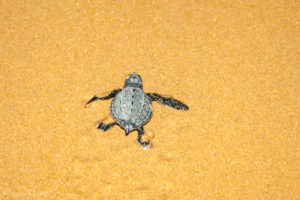
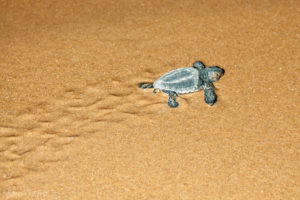
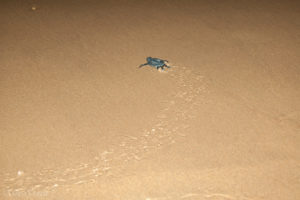
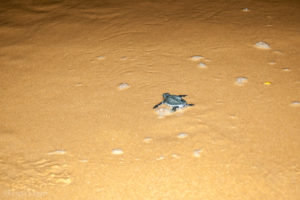
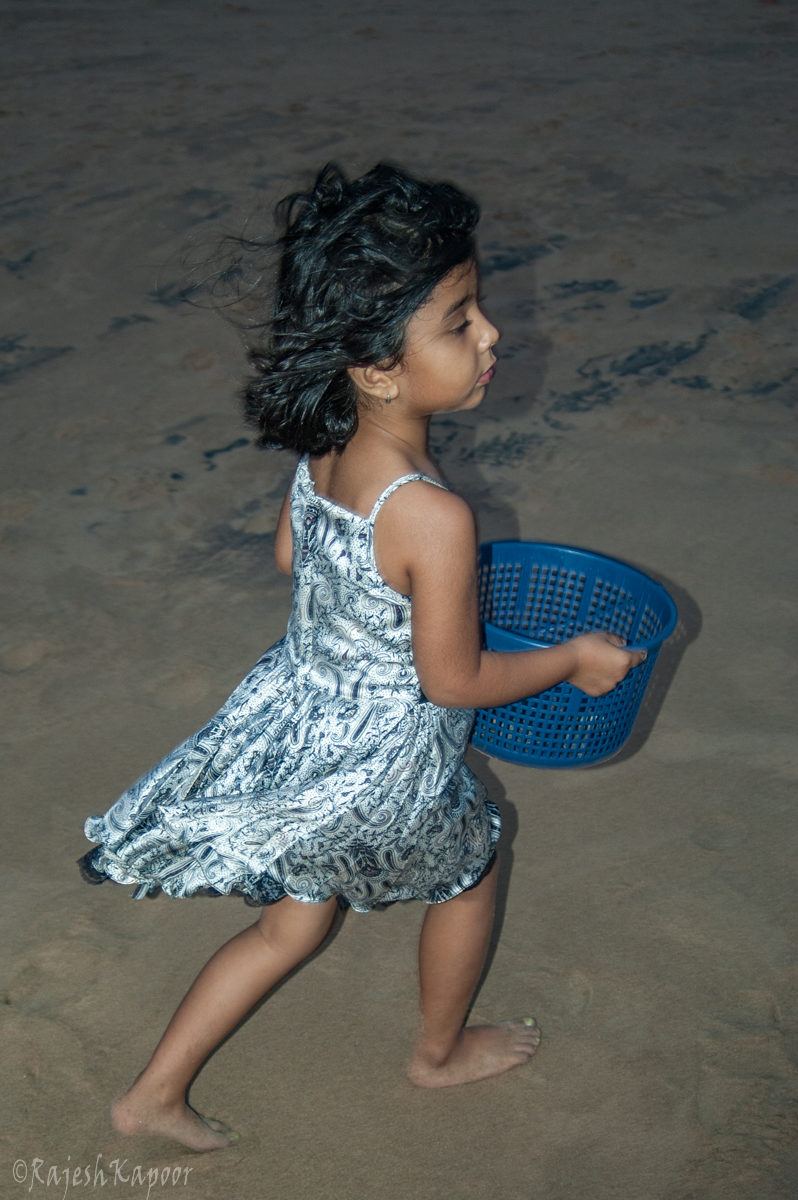
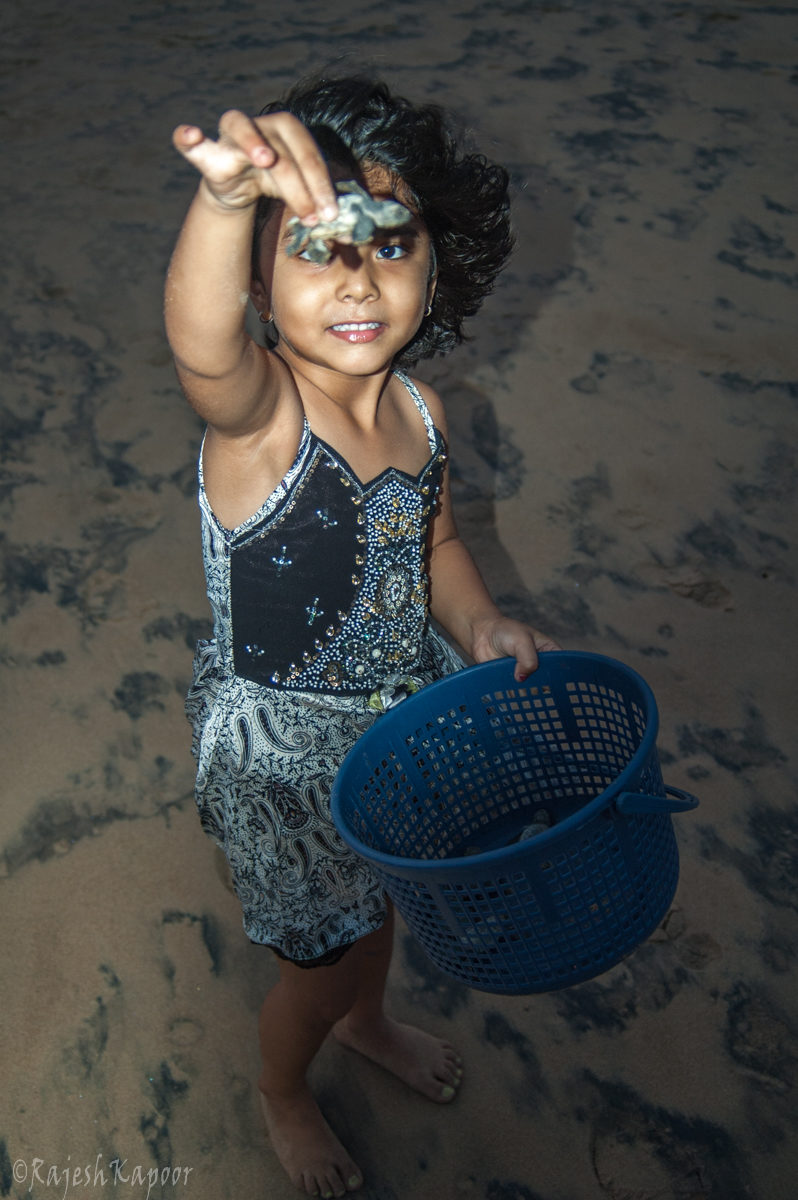
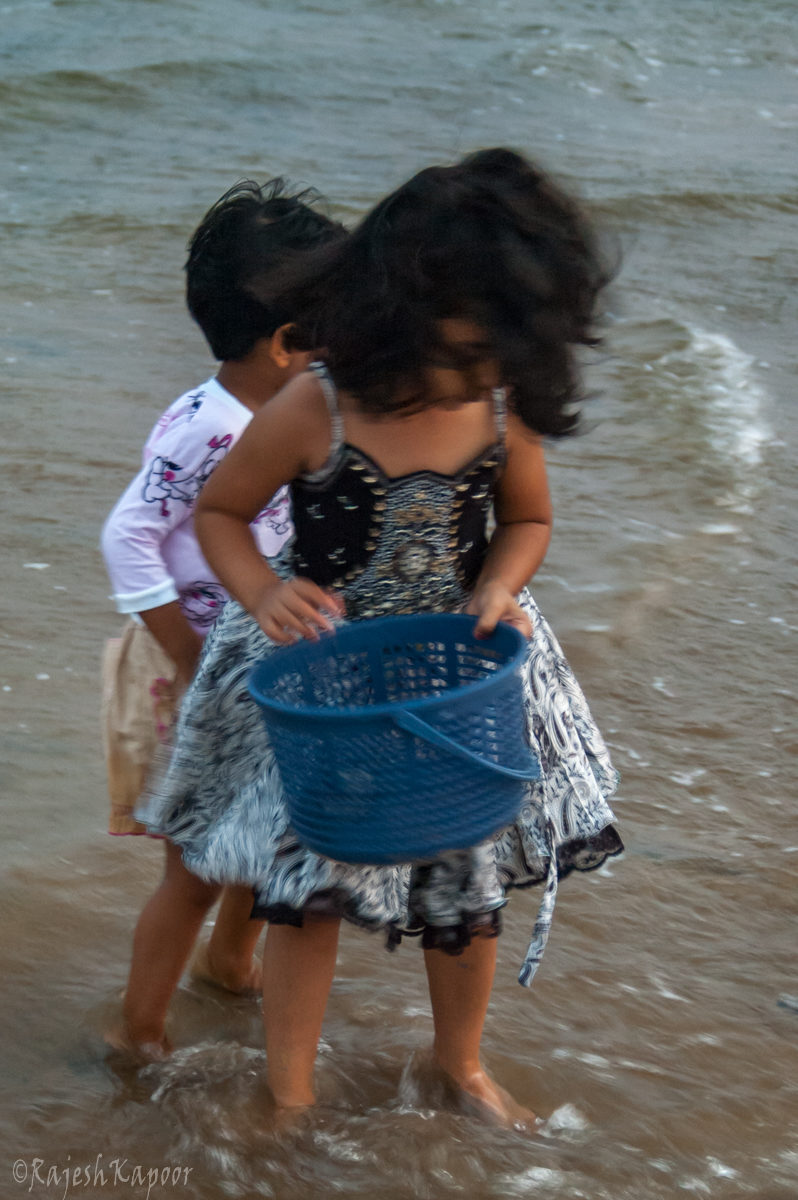
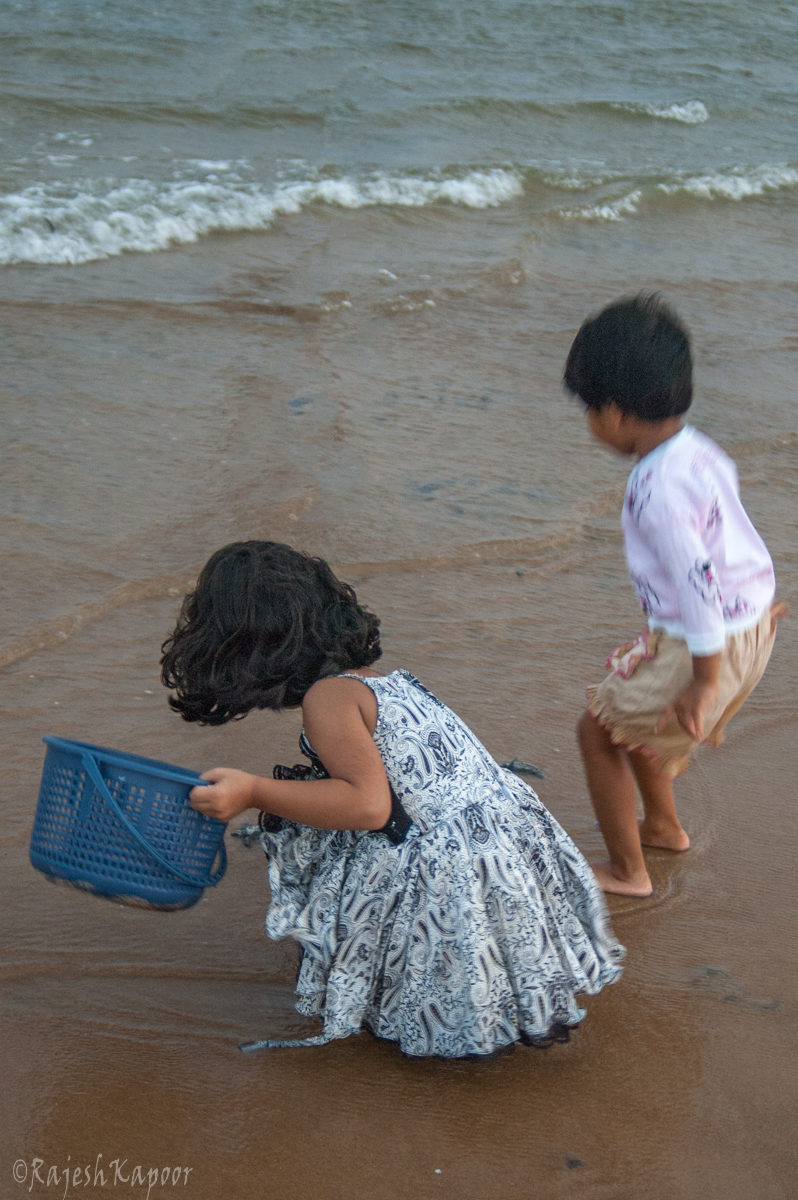
Join
Join our mailing list to receive updates from RajeshKapoor.com
You have Successfully Subscribed!
To protect against spam, this site requires that each email address be verified. You will receive an activation email. Click on the activation link to activate your subscription. Kindly check your junk email folder in case you do not receive the email in next one hour.